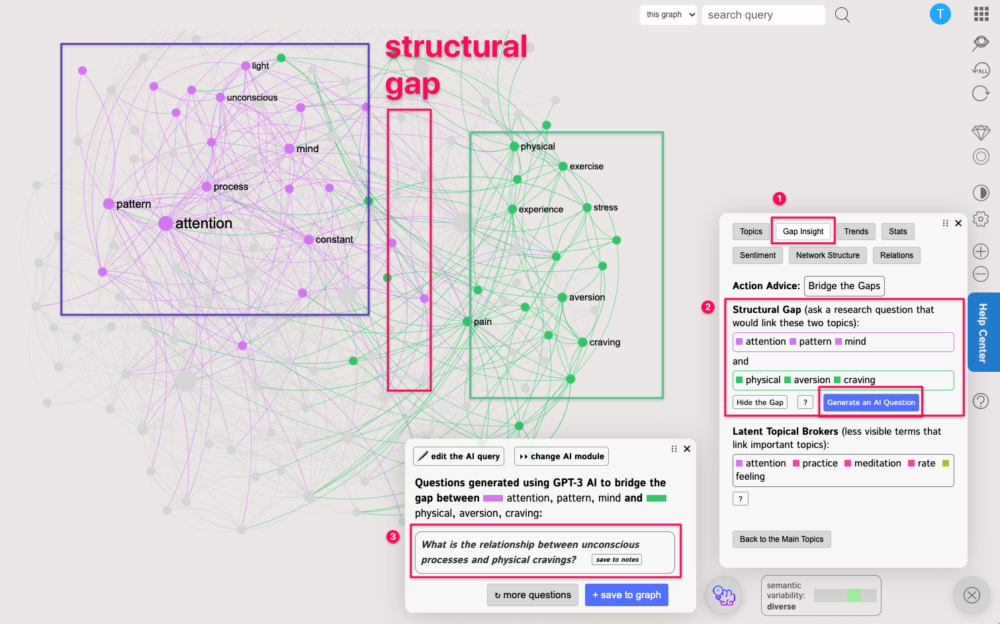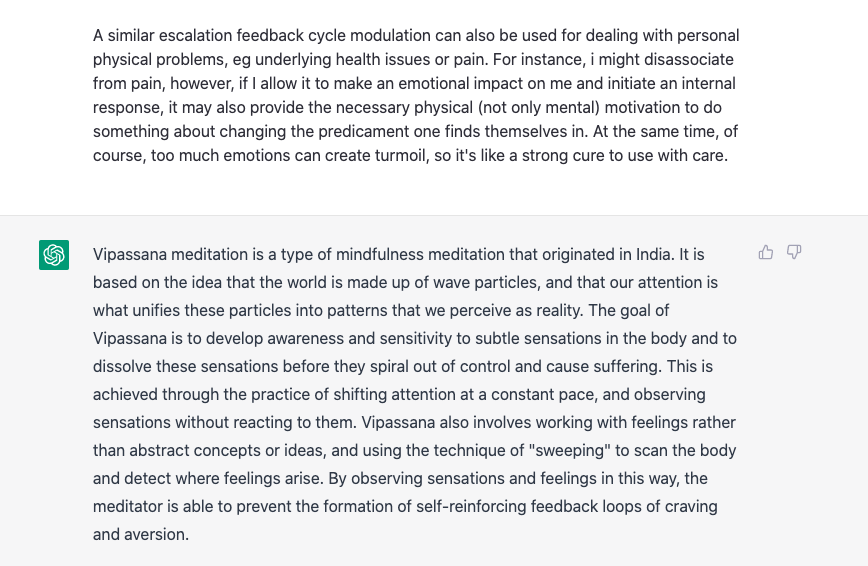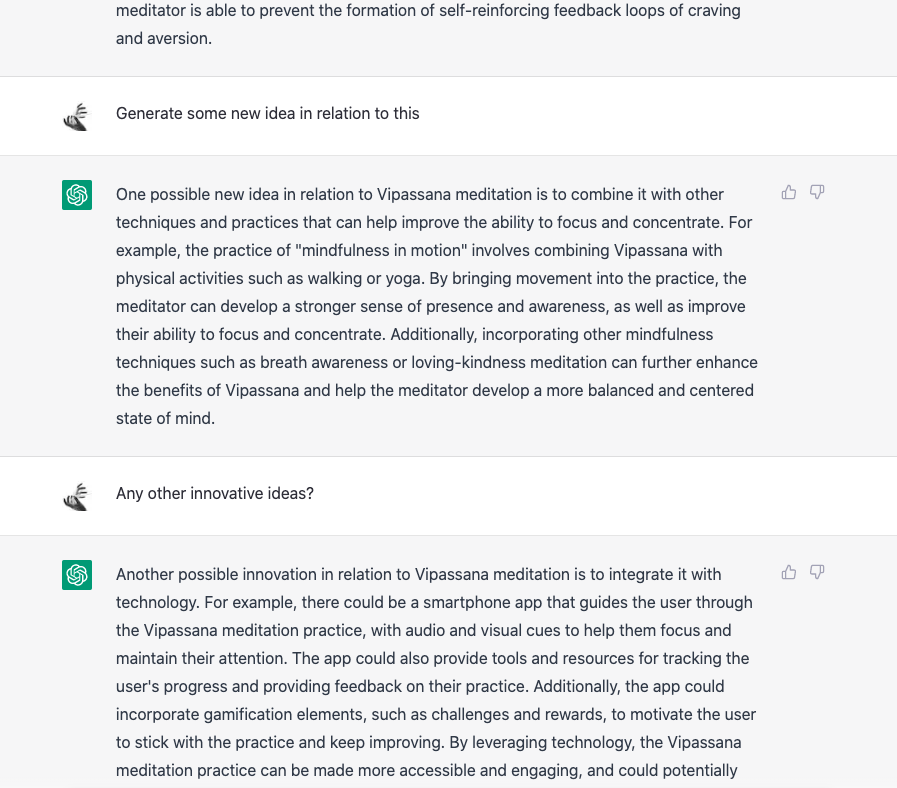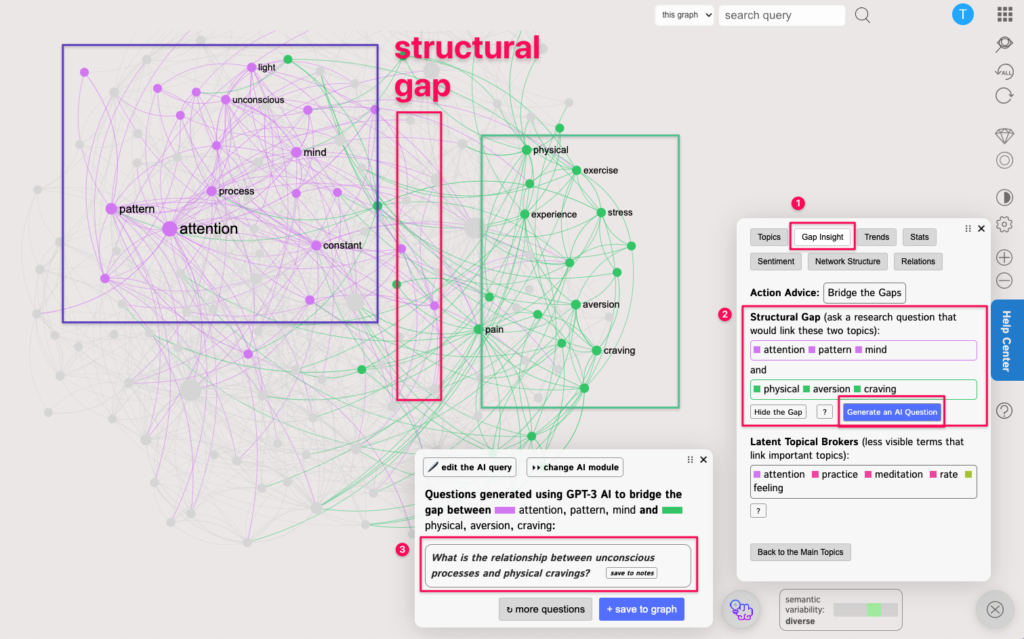Posted by Nodus Labs | December 15, 2022
How to Improve ChatGPT Generated Text

Everyone is talking about the new AI text generator ChatGPT. However, as the hype subsided, many people started to notice that it produced generic, synthetic content. In this article, we will demonstrate how you can improve the content generated by ChatGPT using GPT-3 in combination with structural insights about the text provided by InfraNodus software.
How to Make ChatGPT Be Less Generic?
We will begin with a very practical example. Here is a text about Vipassana meditation that was added to the ChatGPT playground. As you can see, ChatGPT produced a pretty good summary of the text, but it didn’t say anything new in relation to the original:

We could, of course, ask ChatGPT to generate a new idea in relation to this text by providing a prompt that’s explicitly asking it to do that:

As you can see, ChatGPT most likely uses whatever it knows about the topic and adds it to the original text. So it ends up proposing relatively generic ideas that have not so much to do with the original text but with the larger context — combining Vipassana meditation with other techniques and creating an app — you don’t need an AI to come up with this.
So how do we transcend this generic aspect of ChatGPT and use it to help us enhance this discourse and develop it further in an interesting way?
GPT-3 and Text Network Mining are the Answer
We can dramatically improve the output provided by ChatGPT by using the good old GPT-3 (a general natural language model by OpenAI) in combination with text mining and network visualization tool InfraNodus.
In fact, ChatGPT functions a lot like GPT-3, specifically, its text-davinci-003 model, which can provide chat-like output from user-generated prompts. We would not be surprised if Chat GPT is just GPT-3 in a different package, marketed to the consumers. If you check the text outputs of ChatGPT vs GPT-3 playground, you will see that in fact they produce very similar results.
A very effective way to improve GPT-3 responses is to provide more contextual information to the prompt and that is what InfraNodus does, thanks to structural insight about the text generated with text mining and text network analysis.
Specifically, InfraNodus generates topical clusters (prevalent themes present in a document) and detects structural gaps between them. It then generates prompts that ask GPT-3 to bridge those gaps to come up with the new ideas and facts, so the output is much more interesting.
For example, using the text below, we can generate a fact using a combination of structural gap insight and GPT-3:

As you can see, the research question provided attempts to link the existing parts of the discourse in a new way: “What is the relationship between unconscious processes and physical cravings?” — linking together two clusters — “attention / pattern / mind” and “physical / aversion / craving”. An interesting proposition indeed: thinking about the origins of our cravings and how they may be imprinted on the subconscious level because of past experiences, culture, education, or instincts. We could enhance this discourse by proposing a link between meditation and psychotherapy, for example, exploring how winding down physical cravings through awareness may also affect deeply rooted complexes.
This approach allows InfraNodus to come up with highly relevant research questions that are not generic, but, rather connect the ideas present in a discourse in a new way.
…
If you would like to try out the approach presented in this article, log on www.infranodus.com and upload or paste your own text or research notes. You can also use the built-in chat module.
…

